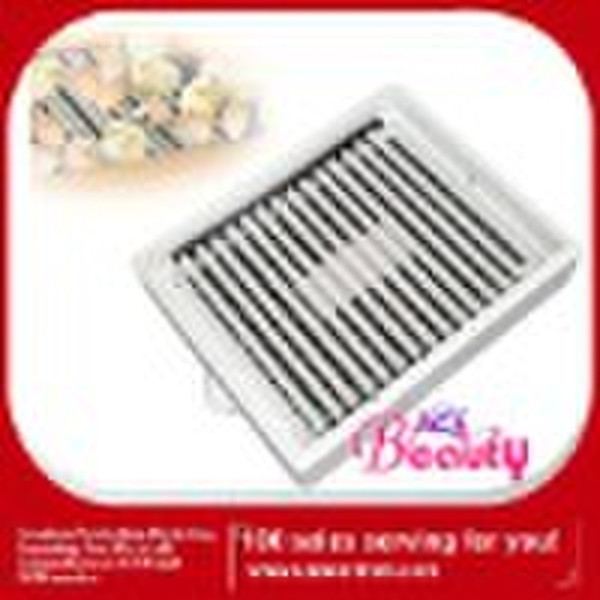Catalog
-
Catalog
- Agriculture
- Apparel
- Automobiles & Motorcycles
- Beauty & Personal Care
- Business Services
- Chemicals
- Construction & Real Estate
- Consumer Electronics
- Electrical Equipment & Supplies
- Electronic Components & Supplies
- Energy
- Environment
- Excess Inventory
- Fashion Accessories
- Food & Beverage
- Furniture
- Gifts & Crafts
- Hardware
- Health & Medical
- Home & Garden
- Home Appliances
- Lights & Lighting
- Luggage, Bags & Cases
- Machinery, Hardware & Tools
- Measurement & Analysis Instruments
- Mechanical Parts & Fabrication Services
- Minerals & Metallurgy
- Office & School Supplies
- Packaging & Printing
- Rubber & Plastics
- Security & Protection
- Service Equipment
- Shoes & Accessories
- Sports & Entertainment
- Telecommunications
- Textiles & Leather Products
- Timepieces, Jewelry, Eyewear
- Tools
- Toys & Hobbies
- Transportation
Filters
Search

Constant Temperature & Humidity Incubator
original price: 45,00 USD
Shenzhen, China

cherry chen
Contact person
Basic Information
| Brand Name | NANDAO |
|---|---|
| Place of Origin | Guangdong China (Mainland) |
| Model Number | ND 133 |
Constant Temperature & Humidity Incubator incubator 1,materials "heat sponge plastics" 2,230VAC all eggs 3,low power 4,High rate of hatched Specifications:Semi-auto chicken egg incubator 1.Capacity for up to 48 eggs 2.semi-automatic turningConstant Temperature & Humidity Incubator This incubator was made according to the latest findings of the insulating material "thermal foam plastic” and is very economical in power consumption. With careful and proper operation, it’ll output a high survival rate and healthy chicks, to achieve the perfect (eggs) breeding.Adjustable spacing can also be used for hatching, such as quail eggs, duck eggs and other species. Pan-line traction is available, to accommodate and maintain the water beneath the tank below.The incubator space can hold 48 eggs or duck eggs hatch at the same timeSimple to use:View temperature from Sensors ScreenSet temperature with the + / - buttonsAdvantages:1 Capacity for up to 48 eggs2 The incubator is made of the insulating material "Thermal Plastic Foam”3 semi-automatic turning4 is equipped with three drip device5 the contact can be easy on and off6 Dimensions (L x W x H): 510 x 420 x 220 mm7 Power of heating element: 46 Watt8 Temperature adjustment range: 20.0 - 40.0 ° C9 Cable length: 1.69 mFacilities:Housing made of thermal insulating foam plasticTwo large viewing windowTemperature control by electronic analog thermostatTeflon-sheathed high-tech heating system, 46 watts3 water troughs (for humidity control)Wire grid (for the slip phase)Semi-Automatic Turning Stake:The semi-automatic turning insert is inserted into the bottom of the incubator on the wire rack and the cord (cord outside) through the eyelets in place. Put the eggs on the rods and mark a few eggs with a pencil on a page with an "X" on the opposite side with an "O".Drag the end of the cord gently until the eggs have turned around 180 degrees, which you can see from the marker.The next time you use pull cord on the opposite end. In this order, please contact the hatching eggs, if possible, however, 5 times a day.After testing a good machine, waiting for 3 days, then put eggs in wire-line.
Delivery terms and packaging
Packaging Detail: Incubator eggswooden case and carton box Delivery Detail: 3days or 4days
Port: shenzhen
Payment term
Documents Against Acceptance
Documents Against Payment
Letter of credit
Telegraphic transfer
MoneyGram
Paypal
Western Union
-
Payment Methods
We accept:








